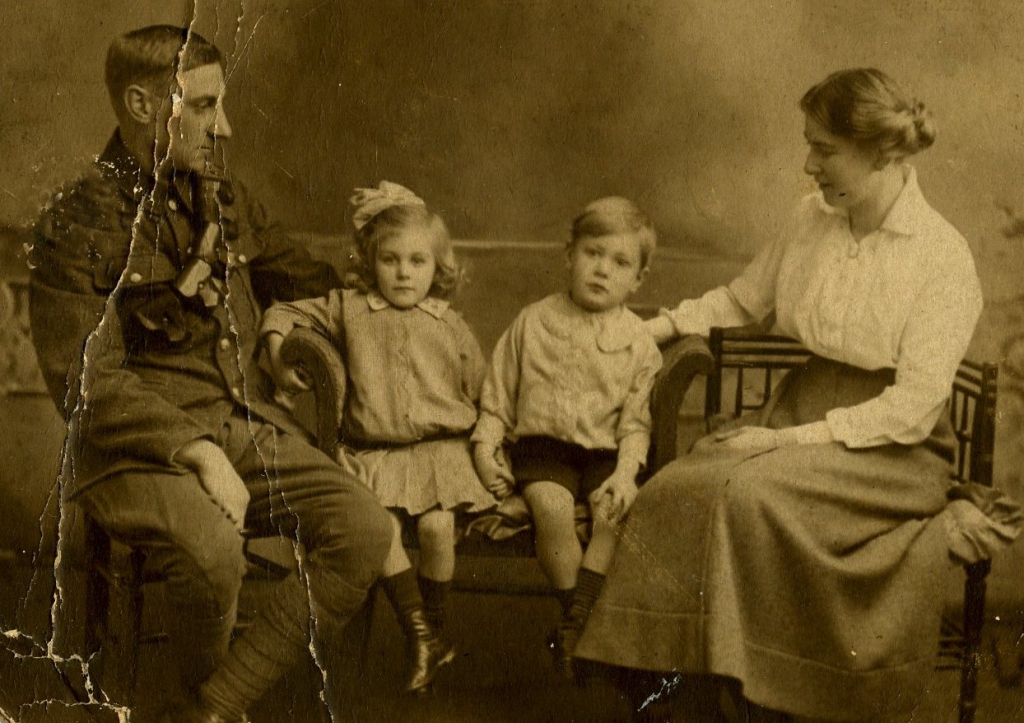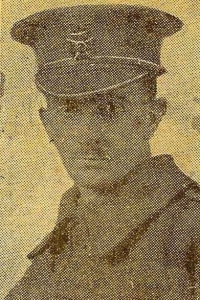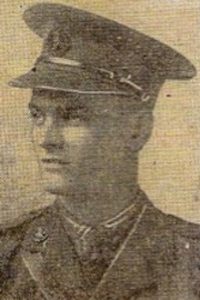Radcliffe on Trent war deaths: Impact on families

Mary and Dick Pike with their parents Charles and Agnes
Charles Pike was killed in 1917 and Agnes Pike died of influenza in December 1918
War deaths result in the reconstruction of affected families. The process of grieving for a lost son, brother, father, husband or fiancé is often accompanied by practical problems related to finance, housing and the operation of family businesses. Each name on the Radcliffe on Trent war memorial is connected to the struggles of those left behind to mourn. We have yet to carry out research on the impact of the war on the lives of those whose relatives were killed. The notes below give a few examples of families for whom the effects would have been considerable.
Brothers who lost their lives in WWI
The tragedy of losing one family member was compounded for five Radcliffe on Trent families who each lost two brothers.
Bertie and Percy Bemrose were regular soldiers stationed in India when war was declared. Their family was used to them being absent from home but would not have been prepared to lose both of them when they joined up before the war.
George and Robert Blatherwick were from a middle class family. When war broke out, George was living in New Zealand and Robert was training to be an architect in his father’s practice. In addition to losing two sons, their father also lost the possibility of his younger son working with him in the future.
George and Gale Nowell were members of a large extended Radcliffe on Trent family scattered through the village. They worked together for a local printer: six of his twelve employees were killed in the war. The obituary below gives voice to the family’s grief and the dashed hopes of fiancée Edith.

Alvin and Sydney Newbury went to a private school in Nottingham and joined the London Artists Rifles – the accepted route to becoming a commissioned officer. They left for the front on the same day and died a year apart. Promising future careers were denied them. Their sister Daisy Newbury was a Red Cross V.A.D. during the war having previously trained as a teacher. Their sister Ada also worked as a Red Cross nurse and married William Ecob, a serviceman who had been transferred to the Royal Flying Corps from the Green Howards.
Alvin and Sydney Newbury
William and Leonard Brice were two of three brothers who all served in the war. William died in the U.K. shortly after the Armistice and Leonard died in 1924. Their mother Mary Brice, who ran the family business, died in 1921 leaving the middle son, John, to continue running it alone.
Husbands, widows and children
Seventeen men on the memorial were married and several had children. The following women became widows; we have little information on the difficulties they faced following their husbands’ deaths.
Alice Beet, Ellen Berridge, Annie Bemrose, Ann Brice, Rosa Brown, Sarahetta Draper, Edith Dyson, Stella Eaton, Clara Harris, Adeliza Hyde, Alice Kitchen, Gertrude Lodge, Edith Moody, Agnes Pike (died of influenza at the end of 1918), Mabel Rushmore, Eliza Smith and Eliza Whitworth.
Marriage records indicate a few of those above remarried soon after the war. Most remained single and their children grew up without a father. We know of eighteen children whose fathers are on the memorial; there may be others. Two or three of the wives were pregnant when their husbands were killed.
The following children lost their fathers:
Winifred Bemrose
Fred Brown, Charles Brown and Thomas Brown
Edith and Stella Eaton
Hannah and Kathleen Harris
Lesley and Mildred Hyde
Violet Kitchen
James Moody
Mary and Richard Pike (who were orphaned by the war)
Vera and Alma Smith
John and Richard Whitworth
As our research continues, we hope to discover more about how the war affected some of the women and children noted above.


